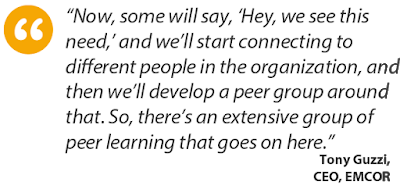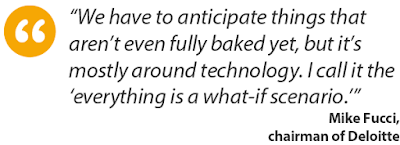In a previous blog post, I talked about how a VUCA environment can actually jumpstart the learning process. But, for learning to take place, learners have to be flexible and open to change.
A term we used to describe learners that thrive – and succeed – in a VUCA setting is “learning agile.”
Dr. David Smith, PhD, organizational psychologist, believes learning agility can be taught because it’s not a trait that’s innate in a person – which is good news. This means we can help learners develop learning agility.

To do that, we must instill in learners these three prerequisites to learning agility:
| |
Potential to learn. Learners must be open to learning and receptive to what we have to teach them. | |||
| |
Motivation to learn. They must be willing to participate in the learning process. | |||
| |
Adaptability to learn. They must be able to take what they learn and apply it to constantly changing conditions. |
Teaching Learning Agility
Before the actual teaching/learning process can begin, Dr. Smith states that forward-thinking organizations start with an assessment. Take stock of what level of learning exists within your organization and if the organization’s environment supports this learning.
If you want to go deeper—at the individual learner level—he recommends Dr. Warner Burke’s Learning Agility Inventory™ (Burke LAI). This is a questionnaire with 38 questions and can be used to measure learning agility in individuals.
Back to the question of how we can help learners develop learning agility. Here are my thoughts.
Peer Learning
Experience sharing can be a gold mine of gaining learning “from experience” without actually having experienced it yourself. Creating “peer groups” similar to what Tony Guzzi, CEO of EMCOR describes here is a great way to collate the experiences of members of the organization, connecting the dots, and moving forward with the group’s shared learning.

What-Ifs
To thrive and even get ahead in a VUCA environment, you have to stop asking “what is” and start asking “what if.” Mulling over the what-ifs will help you think of possibilities and think outside the box.

Responsive Culture
VUCA challenges organizations to adapt, to shape up or ship out. So a responsive culture based on the values of trust and empowerment are essential.
Pratt & Whitney, an American aerospace manufacturer, has “performance connections,” where supervisors sit down with their direct reports thrice a year to talk about how they’re changing the organization’s culture.
Learning Organization
Because VUCA requires learners to be constantly learning, they need to have access to new information and supported by an environment that encourages them to learn through experimentation and even from failure.
Forward-thinking organizations employ after-action reviews to determine “what worked, what went wrong, and what needs to be improved.”
References
Michael Woodward, Ph.D. How to Thrive in a VUCA World: The Psychology of Navigating Volatile, Uncertain, Complex, & Ambiguous Times. Psychology Today, July 31, 2017
Axarloglou Kostas. Learning Agility: A New Learning Paradigm? ALBA Graduate Business School at The American College of Greece, June 28, 2017
Burke’s Learning Agility Inventory™ (Burke LAI)
Brigadier General George Forsythe, Karen Kuhla and Daniel Rice. Five Fortune 500 CEOs on Strategy During Uncertain Times. ChiefExecutive.net, May 16, 2018
Brigadier General George Forsythe, Karen Kuhla and Daniel Rice. Understanding the Challenges of a VUCA Environment. ChiefExecutive.net, May 16, 2018
Tip #57 – Episodic Learning-Learning Like Watching Your Favorite Soap Opera!
Tip #181 – The Conversation Loop: Foster Learning Through Experience Sharing
Tip #187 – VUCA part 1 title- How VUCA Expands Learning Horizons
Ray Jimenez, PhD
Vignettes Learning
“Helping Learners Learn Their Way”

